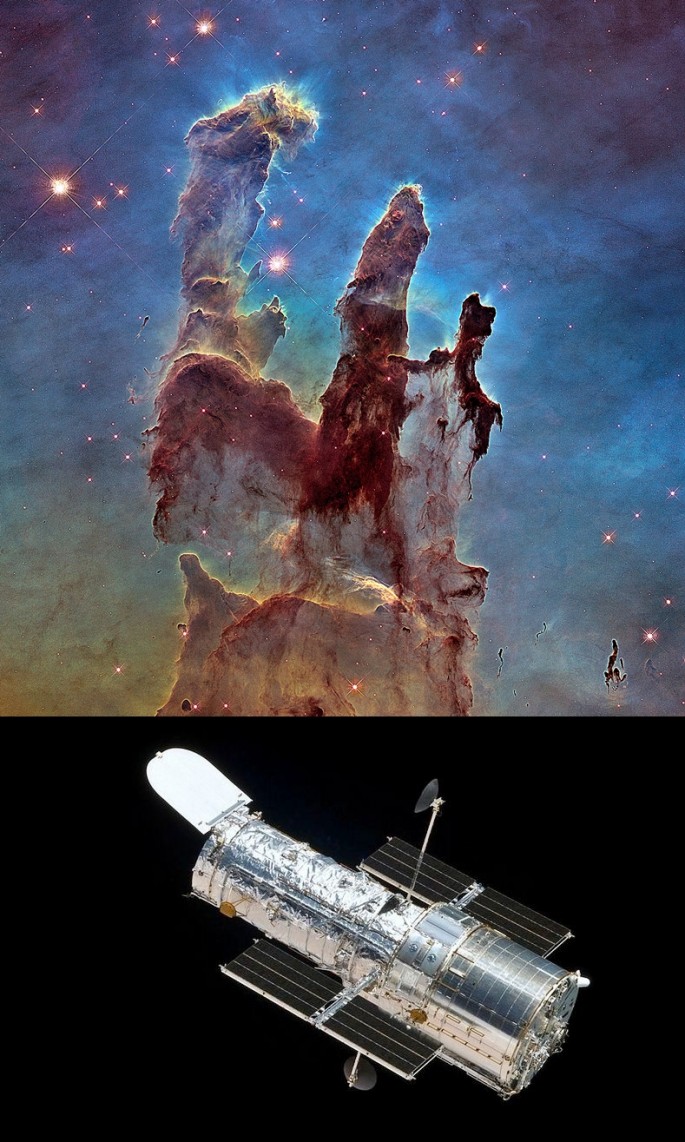The NASA Hubble Space Telescope released into Earth orbit by the space shuttle Discovery on April 24, 1990 has since shown humankind the Universe at it's never been seen or imagined before.
Over that quarter of a century, this history-making telescope has made over 1,000,000 observations of just a tiny slice of the Universe and has inspired scientists to write over 12,700 scientific papers scientific papers based on its discoveries.
During its first 20 years of uncloaking more of the Universe, Hubble captured over 570,000 images of 30,000 celestial objects. And during this time, it made more than 110,000 trips around the Earth.
The most famous astronomical image of the 20th century is the eerily beautiful "Pillars of Creation" taken by Hubble in 1995. Taken in visible light using a combination of SII/H-alpha and OIII filters, this majestic image that has since been enhanced shows a part of the Eagle Nebula where new stars are forming. The tallest pillar is around four light years in length.
Hubble is a joint project between NASA and the European Space Agency (ESA).
NASA will commemorate Hubble's 25th anniversary by issuing a documentary about the telescope and will also hold other events in its honor. The documentary is called "Saving Hubble" and tells the story of how dedicated men and women prevented the end of the Hubble mission in 2004.
"Hubble's wide support among the general public, to say nothing of the space and astronomy communities, is obviously a testament to the success of the mission, but the achievement of Hubble is even greater than the sum of all the science and wonder the mission has generated -- so great it's hard to articulate the feeling, though so many of us recognize it and attempt to describe it", said David Gaynes, director the documentary.
Hubble is 13.3 meters long and weighs 24,500 pounds. It has a 2.4 meter primary mirror and generates 10 terabytes of new data every year. Hubble's four main instruments observe in the near ultraviolet, visible, and near infrared spectra. The telescope is named after the famous astronomer, Edwin Hubble.
Hubble is the only telescope designed to be serviced in space by astronauts. After being placed in low Earth orbit 569 km above the ground by Discovery (Space Shuttle mission STS-31), four subsequent Space Shuttle missions repaired, upgraded, and replaced systems on Hubble.
Hubble's orbit above the Earth's distorting atmosphere allows astronomers to make the very high resolution observations essential to open new windows onto planets, stars and galaxies. Hubble can access the otherwise invisible ultraviolet part of the spectrum, and also has access to areas of the infrared not visible from the ground.
Hubble has also mapped the large-scale, three-dimensional distribution of dark matter. It also has a key role in determining the history of the cosmic star-formation rate.
Hubble could survive into 2020, said NASA. Based on solar activity and atmospheric drag, a natural atmospheric reentry for Hubble will occur between 2030 and 2040.
Hubble's successor, the James Webb Space Telescope (JWST), is scheduled for launch in 2018.



























